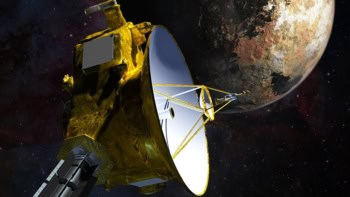As Mars Global Surveyor continues to provide stunning images of the red planet, NASA is preparing its next two missions - the Mars Surveyor 98 program.
The Surveyor 98 mission consists of a satellite called Mars Climate Orbiter, and a ground probe, Mars Polar Lander. Both craft will arrive at Mars during 1999. The orbiter will spend two years measuring atmospheric properties – such as volatiles and water vapour – and taking high-resolution photographs of the surface. The lander will search for subsurface water during its three month mission. Its payload includes cameras, a robotic arm and soil composition instruments.
For the first time a public interest organization, the Planetary Society, will provide an instrument, for a NASA probe. The Mars microphone will allow researchers to actually hear sounds from another planet.
The idea of a microphone on Mars was originally proposed by Carl Sagan in the early seventies. He believed that having such an instrument on Mars would heighten public interest in science. Louis Friedman, executive director of the Planetary Society, agreeds “The microphone will add drama and a sense of adventure to the 1999 arrival of the Mars Polar Lander.”
The Planetary Society raised funds from over 2000 private donations for the microphone. The society contracted Janet Luhman of the Berkeley Space Science Laboratory, University of California, to design the microphone. “They have a group there with good hardware experience” says Friedman. The team kept costs low by using off-the-shelf parts. Students and research associates helped design the instrument.
The device is part of an LIDAR (light detection and ranging) instrument package built by the Russian Space Research Institute (IKI). The Russian experiments are designed to examine the presence and altitude of dust and aerosols in the atmosphere. This is first time a Russian instrument will fly aboard a US planetary mission.
Anyone will be able to download sounds from Mars over the Internet if the landing is successful. Students can also add their name to a microchip which will be placed on the lander.
The actual landing site was recently photographed by Mars Global Surveyor and suggests a more dramatic landscape than previous Mars missions. “The 75 degree south latitude landing zone is quite a bit more rugged and geologically diverse than we had previously thought” said Dr. Michael Malin, one of the mission’s principal investigators.
Mars Global Surveyor will narrow down the best landing sites for the lander over the next year.



